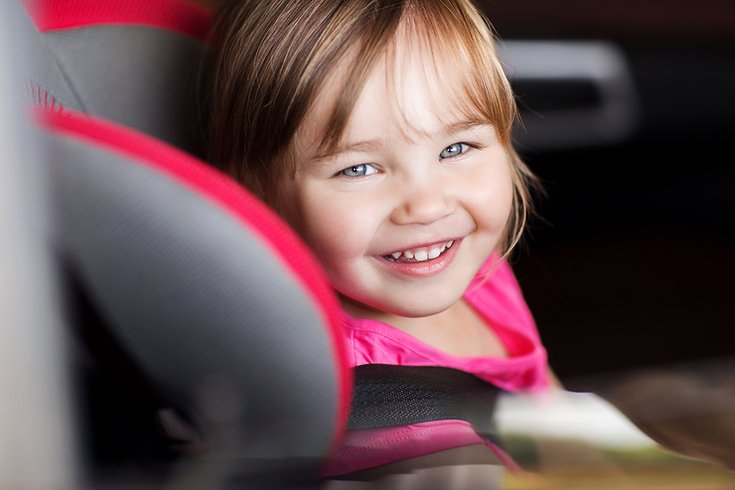
August 21, 2019
 Source/Image licensed by Ingram Image
Source/Image licensed by Ingram Image
Motor vehicle crashes are a leading killer of children.
ProPublica is a Pulitzer Prize-winning investigative newsroom. Sign up for The Big Story newsletter to receive stories like this one in your inbox.
A long-awaited federal safety standard to test child car seats for their effectiveness in side-impact car crashes has been delayed to March 2020 — more than six years since the regulation was first proposed and nearly two decades since Congress urged the Department of Transportation to address the issue.
Attempts to improve car seat safety have bogged down because of a lack of good data on accidents involving children, antiquated technology and industry lobbying. The car seat industry has sought to delay the side-impact rule, arguing that the government should not act without also updating its other safety standards for car seats.
Joseph Colella, the director of child passenger safety for the Juvenile Products Manufacturers Association, said that having to test multiple types of child car seats under varying crash scenarios with different testing tools would impose an “undue burden” on manufacturers and would lead to price increases for consumers.
The timetable for setting new rules for child seats has slowed further under the administration of President Donald Trump. The National Highway Traffic Safety Administration has not had a permanent administrator since January 2017. And Trump issued an executive order in January 2017 directing federal agencies to get rid of two regulations for each new one, a standard that consumer safety advocates say often hurts the ability of regulators to address dangers.
“This isn’t really new that NHTSA is slow to rule,” said Denise Donaldson, the editor of Safe Ride News, a child passenger safety publication. “When you’re already pretty slow and this happens, it just adds to the problem.”
Tim Edwards, a regulatory compliance manager at Dorel Juvenile, a car seat maker, said the company believes that NHTSA plans to update its front-collision standards and put forward the side-impact rule at the same time. If true, that could delay the side-impact standard beyond 2020.
The Department of Transportation provided a cryptic reason for the continued delay in a recent report on its regulatory agenda: “additional research and data analysis necessary.” Some previous reports simply listed “N/A” as the explanation. NHTSA, the agency that regulates car seats, declined to comment.
Motor vehicle crashes are a leading killer of children. Currently, child car seat manufacturers are required to test their seats in a simulated frontal collision. While those kinds of crashes are more common, side-impact crashes, like T-bone collisions, are more dangerous with higher rates of injury.
According to NHTSA, 794 child passengers age 14 and younger died in car crashes in 2017, the latest data available. The number of deaths of child passengers has been about the same since 2013.
NHTSA’s efforts to develop a side-impact standard for child seats began in the early 2000s. But the agency lacked solid data on how and how many children got hurt or died in vehicle accidents. The industry also did not have a crash test dummy that could be used to measure the crash forces experienced by children in real-world side-impact crashes.
In January 2014, NHTSA finally issued a proposed standard that would require all seats designed for children up to 40 pounds (or children in the infant to 4-year-old range) to be tested in a simulated side-impact collision.
The industry pushed back. In October of that year, Dorel Juvenile wrote in a public comment to NHTSA that releasing the side-impact test rule and the updated frontal test rule at different times would lead to major disruption and simultaneous “synchronization of both standards” would be “preferred.” While the agency was supposed to issue a final standard in 2014 according to the deadline set by Congress, NHTSA has repeatedly postponed the test requirement.
Consumer advocates have raised concerns about the delays. “I don’t understand why anyone hasn’t sued,” said Rena Steinzor, a professor of administrative law at the University of Maryland School of Law. An agency can be sued for unreasonable delays in implementing regulations or for failing to meet a deadline specified by Congress. “Unless they are worried that the Trump NHTSA would come up with a very weak rule,” she added.
A key issue is that the vehicle seat used to test the safety of child car seats in head-on crashes was initially based on the 1974 Chevrolet Impala. It was updated in 2003 to represent car seats of that time, but it is still not considered an accurate model for today’s cars.
While NHTSA has conducted and supported research on what a new seat for head-on tests might look like, the agency hasn’t formally proposed a design or said whether other aspects of the head-on test will change. (NHTSA’s explanation for delaying its proposal for an updated frontal test: “additional coordination necessary.”) That process would require public comment and could take years.
Benjamin Hoffman, the chair of the American Academy of Pediatrics Council on Injury, Violence and Poison Prevention, said that he is saddened by the continued delays.
“I can’t not be hopeful, but I remain skeptical,” he said. “We’ve been burned too many times.”